Want to improve your dart skills while having fun? Using **fun games benchmark darts progress** allows you to track your performance, identify weaknesses, and celebrate improvements, all while enjoying the process. This article explores several engaging dart games and how they can be used as effective benchmarks to measure your development.
⚠️ Still Using Pen & Paper (or a Chalkboard)?! ⚠️
Step into the future! The Dart Counter App handles all the scoring, suggests checkouts, and tracks your stats automatically. It's easier than you think!
Try the Smart Dart Counter App FREE!Ready for an upgrade? Click above!
Using Fun Games to Benchmark Darts Progress
Traditional practice routines can become monotonous. By incorporating **fun games**, you add an element of enjoyment to your training, making it more engaging and sustainable. These games also provide valuable data, helping you **benchmark darts progress** and track your improvement over time. Learning **old dart games rules** can also spice up your practice sessions.
But how exactly do these **fun games benchmark darts progress**? They provide a measurable framework. You can track your scores in each game, identify patterns in your performance, and use this information to refine your practice regimen. Think of it as gamified self-improvement!
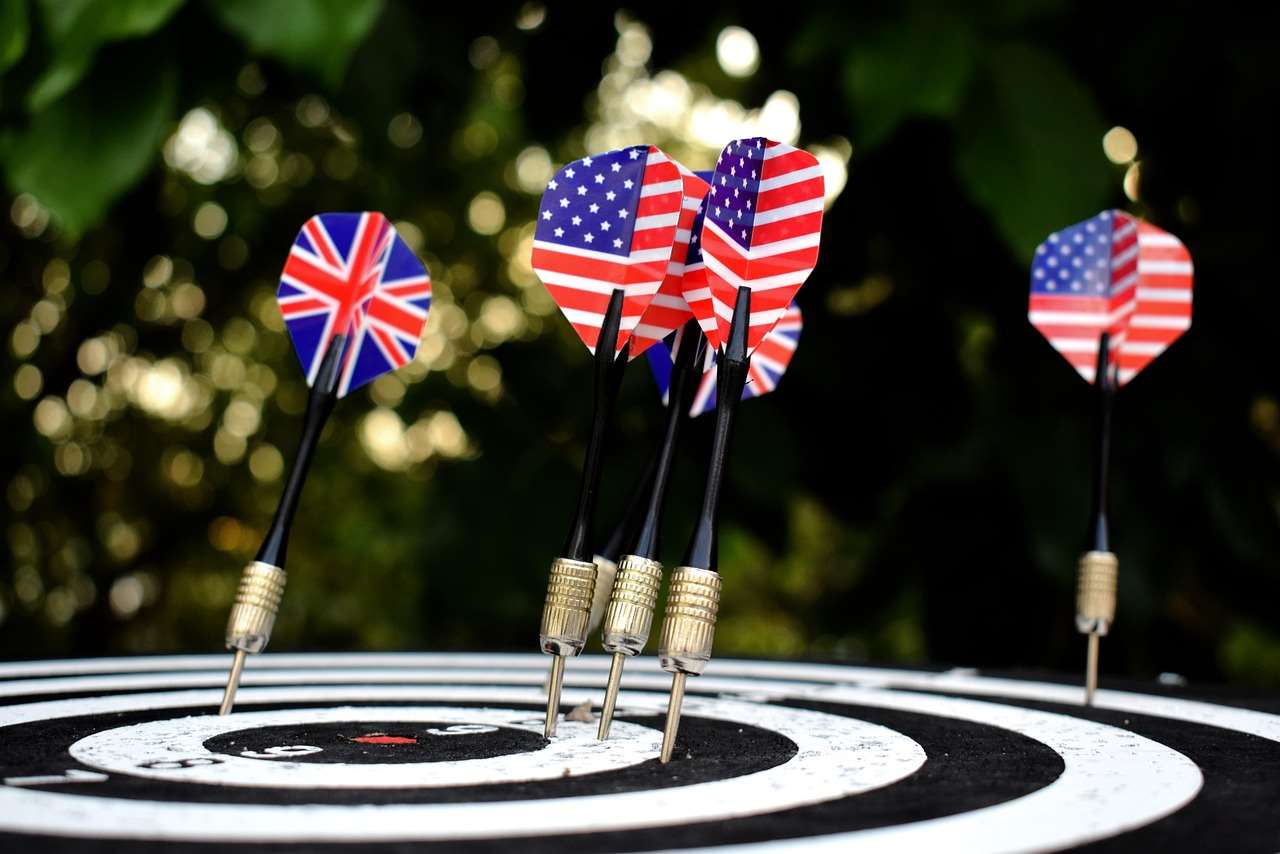
Choosing the Right Games for Benchmarking
Not all games are created equal when it comes to benchmarking. The ideal game should:
- Isolate specific skills: Some games focus on accuracy, while others test your ability to score under pressure. Choose games that align with your goals.
- Offer consistent metrics: You need a way to track your performance over time. Games with clear scoring systems are ideal.
- Be enjoyable: If you’re not having fun, you’re less likely to stick with it.
Here are a few examples of dart games that are great for benchmarking:
Around the Clock
Around the Clock (also known as “Around the World”) is a classic game where you have to hit each number on the dartboard in order, from 1 to 20. You can make it harder by requiring a double or treble on each number.
Benchmarking: Track the number of darts it takes you to complete the game. A lower number indicates improved accuracy and consistency. You can also track your success rate on doubles or trebles to identify areas for improvement.
Cricket
Cricket is a strategic game where players aim to close out numbers (20, 19, 18, 17, 16, 15, and the bullseye) by hitting them three times. Once a number is “closed,” only the player who closed it can score on it. This game is all about strategy and outsmarting your opponent.
Benchmarking: Track your scoring average on your closed numbers (20, 19, etc.) and your ability to close out numbers quickly. Also, note your success rate in hitting the bullseye. You can find many examples of Darts Variants Fun Games online that you can incorporate.
Shanghai
Shanghai requires you to hit the single, double, and treble of a specific number in the same round. You cycle through the numbers 1 to 20.
Benchmarking: Record your success rate in hitting the Shanghai for each number. This game is excellent for gauging your accuracy under pressure, as you only have three darts to achieve the desired result. If you want to try even more offbeat games, you can search for an obscure dartboard games list.
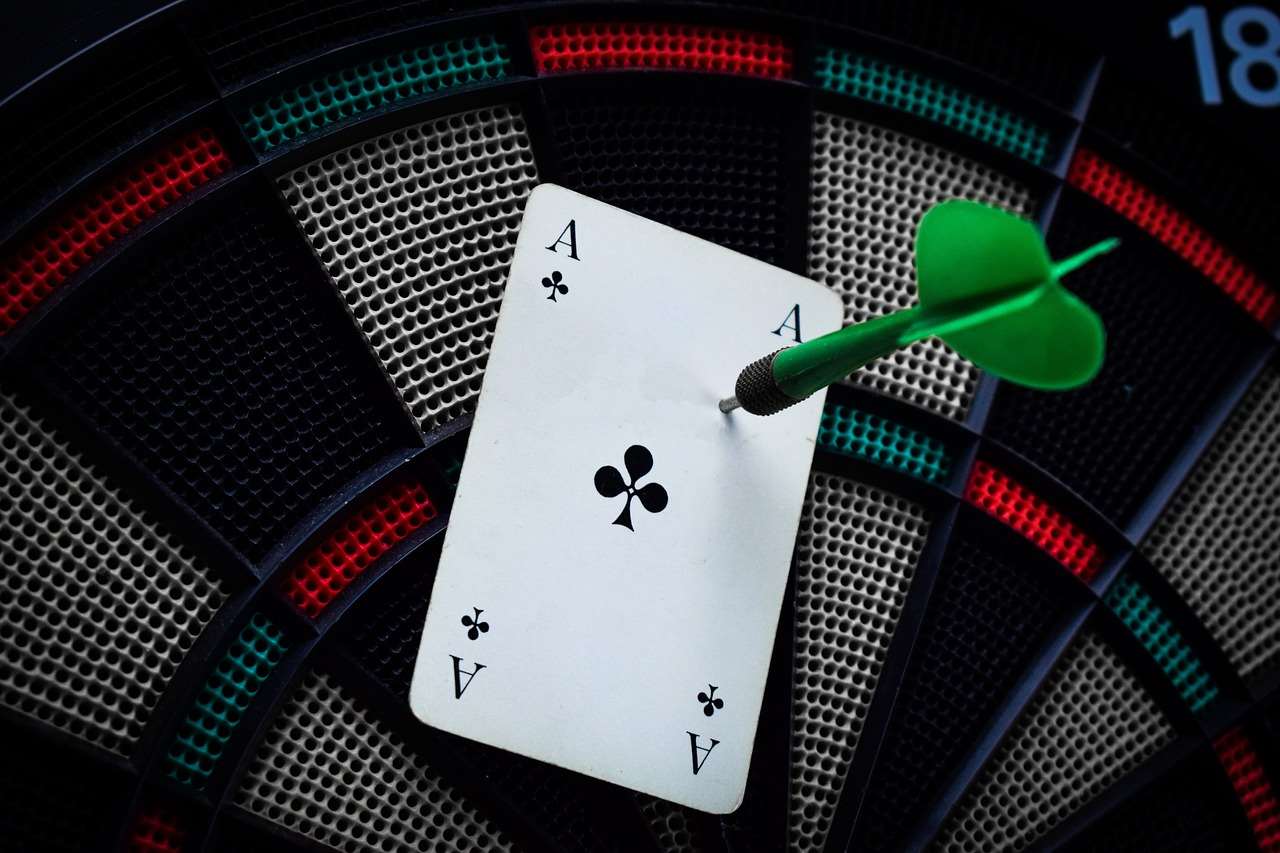
Setting Up Your Darts Progress Benchmark
Once you’ve chosen your games, it’s time to set up a system for tracking your progress. Here’s a simple approach:
- Choose your games: Select 2-3 games that you enjoy and that target different skills.
- Establish a baseline: Play each game a few times and record your scores. This will be your starting point.
- Track your progress: Regularly play the games and record your scores each time.
- Analyze your data: Look for patterns in your performance. Are you consistently struggling with a particular number or skill?
- Adjust your practice: Based on your analysis, adjust your practice routine to focus on your weaknesses.
Tools for Tracking Your Darts Performance
You can use a variety of tools to track your darts performance, including:
- Spreadsheets: A simple spreadsheet can be used to record your scores and calculate averages.
- Darts scoring apps: Several apps are available that allow you to track your scores and analyze your performance. These often include features like statistical analysis and progress tracking.
- Notebooks: Don’t underestimate the power of a pen and paper. Keep a dedicated notebook to record your scores, practice notes, and observations.
Advanced Strategies for Darts Progress
Once you have a solid understanding of the basics, you can start to explore more advanced strategies for **fun games benchmark darts progress**:
Handicapping Games
If you’re playing against opponents of different skill levels, consider using a handicapping system to level the playing field. This could involve giving the weaker player a head start or adjusting the scoring rules.
Varying Your Games
Don’t get stuck in a rut playing the same games over and over. Introduce new games and variations to keep things fresh and challenge yourself in new ways. Look into historical dart game variations to find some interesting new challenges.
Setting Realistic Goals
It’s important to set realistic goals for your darts progress. Don’t expect to become a professional overnight. Focus on making small, incremental improvements over time.
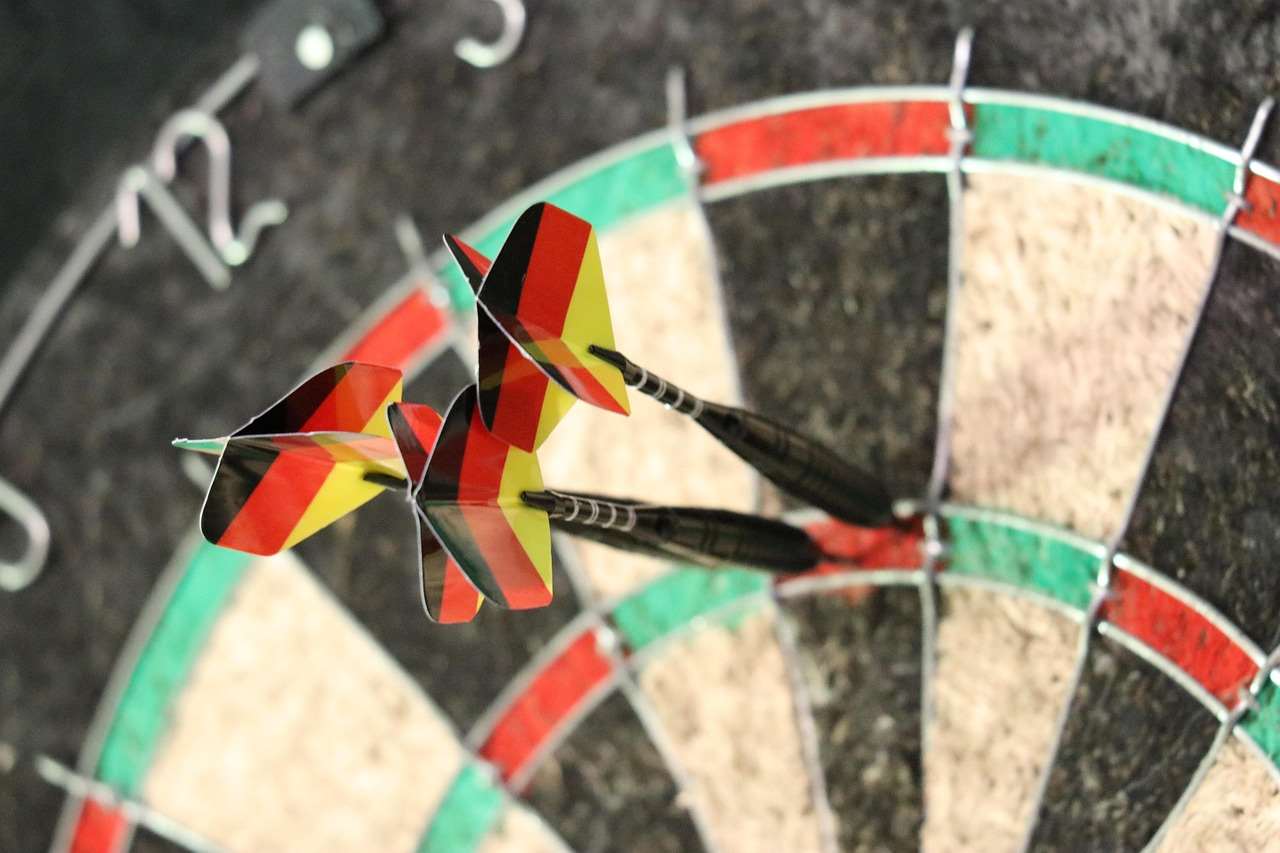
Common Mistakes to Avoid
Even with the best practice regimen, it’s easy to fall into common traps that can hinder your **darts progress**. Here are a few to watch out for:
- Neglecting the fundamentals: Don’t forget the basics of stance, grip, and release. These are the foundation of a consistent throw.
- Practicing without purpose: Randomly throwing darts won’t get you very far. Focus on specific skills and goals during your practice sessions.
- Ignoring your mental game: Darts is as much a mental game as it is a physical one. Learn to manage your emotions and stay focused under pressure.
- Using the wrong equipment: Ensure you have darts that are the right weight and shape for you. Experiment with different flights and stems to find what works best.
The Mental Game of Darts
As mentioned earlier, the mental aspect of darts is crucial. Here’s how to cultivate a winning mindset:
- Visualization: Mentally rehearse your throws before you step up to the oche. Imagine yourself hitting your target.
- Positive self-talk: Replace negative thoughts with positive affirmations. Believe in your ability to succeed.
- Focus on the process, not the outcome: Don’t get too caught up in the score. Focus on executing your throw correctly.
- Learn to manage pressure: Practice under pressure to prepare yourself for competitive situations.
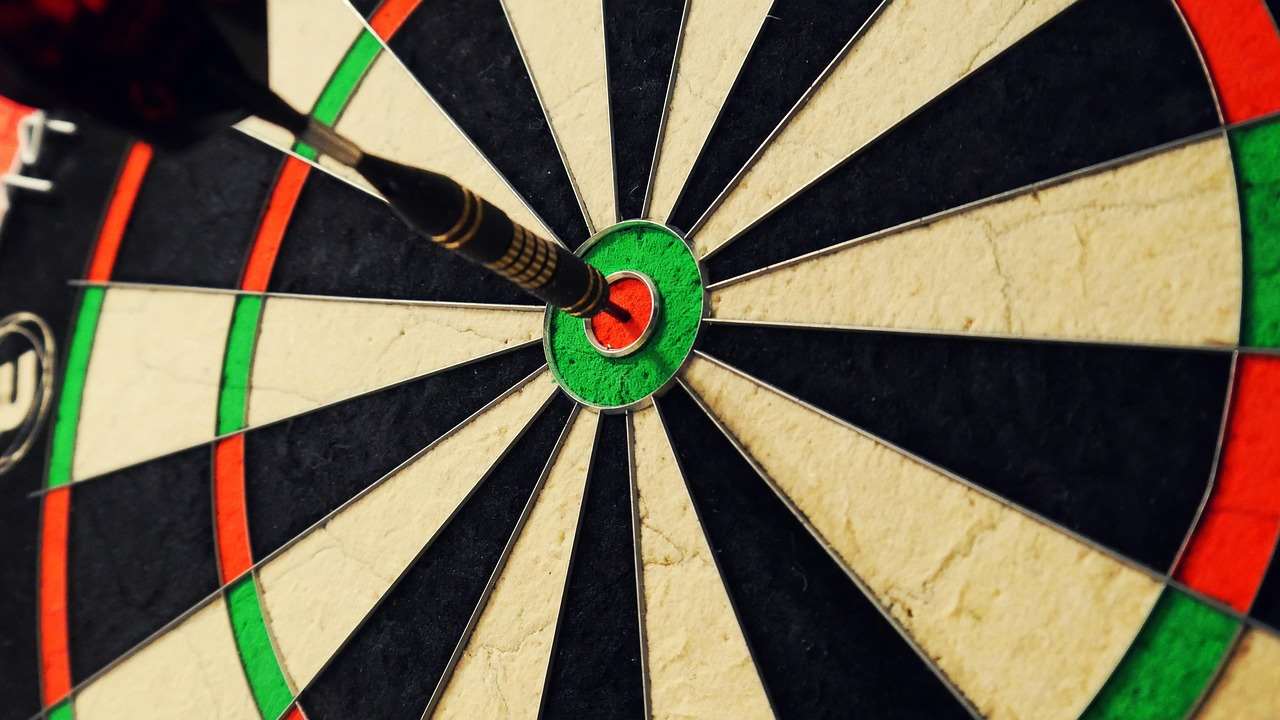
Gear Up: Choosing the Right Darts Equipment
Having the right equipment can also significantly impact your game. Let’s explore some options:
Dartboards
Bristle Dartboards: These are the standard for steel-tip darts and offer self-healing properties. Look for boards with thin wiring for better scoring potential.
Electronic Dartboards: Ideal for soft-tip darts, these boards automatically calculate scores and offer various game modes.
Darts
Steel-Tip Darts: Used with bristle dartboards, these darts feature sharp steel tips.
Soft-Tip Darts: Designed for electronic dartboards, these darts have plastic tips that won’t damage the board.
Dart Weight
The weight of your darts is a personal preference. Experiment with different weights to find what feels most comfortable and allows for consistent throws. Typically, darts range from 20 to 26 grams.
Flights and Shafts
Flights and shafts affect the dart’s aerodynamics. Experiment with different shapes and materials to find what works best for you. Consider flight shapes like standard, kite, slim, or vortex. Shaft materials can include nylon, aluminum, or carbon fiber.
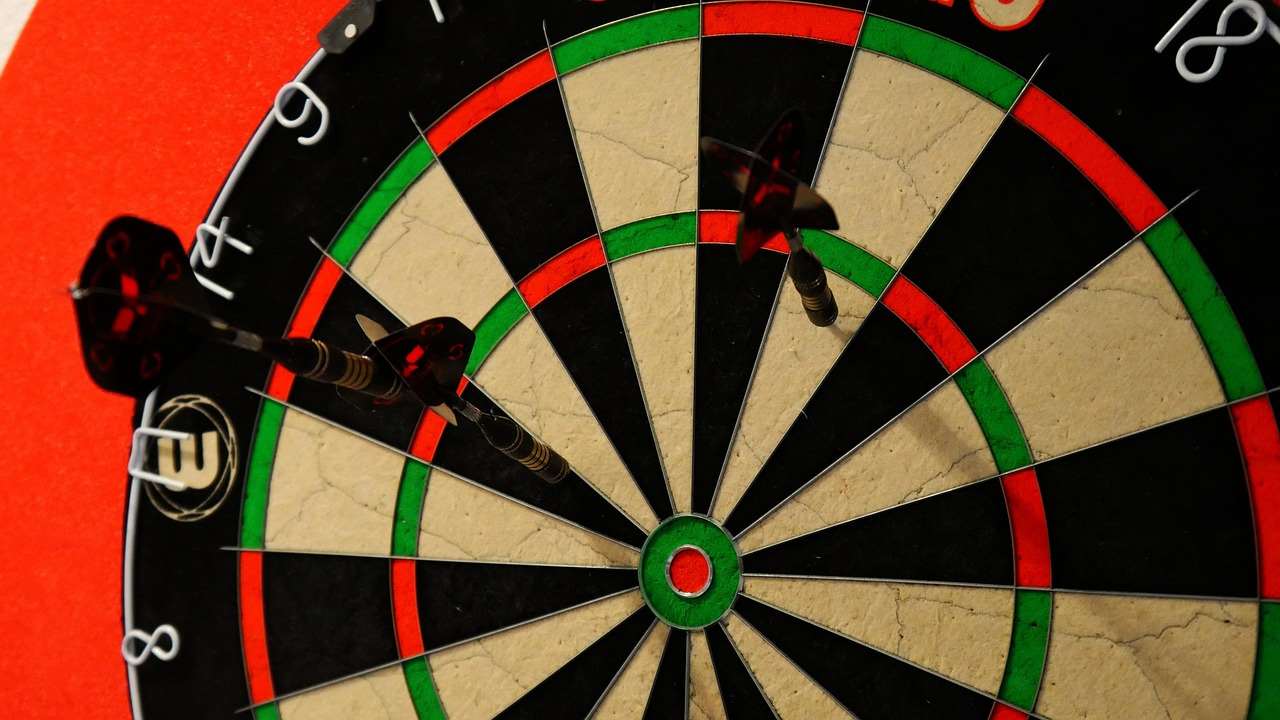
Taking Your Game to the Next Level: Leagues and Clubs
Once you’ve mastered the basics and are consistently improving, consider joining a darts league or club. This is a great way to test your skills against other players, learn new strategies, and socialize with fellow dart enthusiasts. Consider exploring the history of darts games uk to learn more about the game’s rich heritage.
Many leagues offer different divisions based on skill level, so you can find a league that’s right for you. Participating in leagues provides valuable experience and can help you further refine your game.
The Social Side of Darts
Beyond the skill and competition, darts is a social activity. Whether you’re playing casually with friends or competing in a league, darts offers a chance to connect with others and enjoy some friendly competition. Embracing the social aspect can make the experience even more rewarding.
Conclusion
By incorporating **fun games benchmark darts progress**, you can transform your practice sessions from a chore into an enjoyable and effective learning experience. Remember to track your performance, analyze your data, and adjust your practice accordingly. With consistent effort and a positive mindset, you’ll be well on your way to improving your dart skills and reaching your goals. So, pick up your darts, choose your games, and start tracking your progress today!
Ready to take your darts game to the next level? Join a local darts league and put your skills to the test! Find a league near you and start competing today!
Hi, I’m Dieter, and I created Dartcounter (Dartcounterapp.com). My motivation wasn’t being a darts expert – quite the opposite! When I first started playing, I loved the game but found keeping accurate scores and tracking stats difficult and distracting.
I figured I couldn’t be the only one struggling with this. So, I decided to build a solution: an easy-to-use application that everyone, no matter their experience level, could use to manage scoring effortlessly.
My goal for Dartcounter was simple: let the app handle the numbers – the scoring, the averages, the stats, even checkout suggestions – so players could focus purely on their throw and enjoying the game. It began as a way to solve my own beginner’s problem, and I’m thrilled it has grown into a helpful tool for the wider darts community.